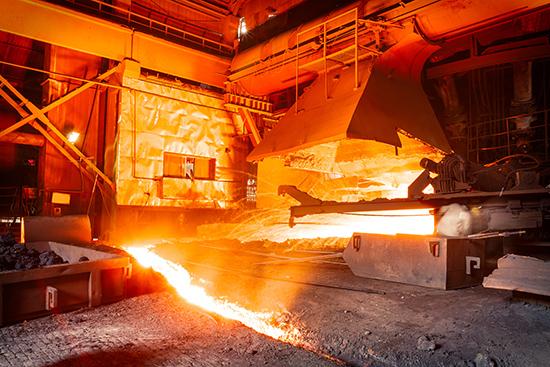Original Post
By Stuart Burns
The cracks are beginning to show in China's steel sector.
Falling steel prices last year were matched more or less by falling input costs as iron ore and coking coal prices collapsed, but even so, margins remained under intense pressure as the overall metric tonnage produced dropped for the first time in decades.

Chinese steel mills are under pressure to cut their debts. It's inevitable that some will not survive. Source: Adobe Stock/zjk.
The position of steel companies differs depending on their cost of production, debt commitments and level of efficiency, but China's steel sector as a whole lost money last year. According to the Financial Times, China's biggest 101 steel companies, lost a combined 72 billion RMB ($11bn) in the first 10 months of 2015 but that doesn't tell the whole story.
State-Owned Problems
48, mostly state-owned, enterprises bore the brunt of the losses, while the balance are mostly more efficient private sector firms that managed to squeeze out a marginal profit. Since then, the situation has gotten worse in spite of a short-term rally in prices over recent weeks. Li-Gang Liu, chief economist focused on China at ANZ, was quoted in the Financial Times as saying that year-on-year steel output fell 12% in both December and early January, putting further pressure on steel mills' cash flows.
All this would, in itself, be understandable after decades of debt-fueled breakneck growth and would support Beijing's case for rationalizing the sector by forcing less efficient, older and more polluting plants to close… but the market looks like it could be exerting its will before Beijing's rather ponderous response gets underway.
Reuters reported that following on last autumn's bond default by Sinosteel, China's largest state-owned steel trader Bohai Steel Group Co. Ltd., the 18th largest steel maker in the world according to the World Steel Association, looks like it might be unable to repay its eye-watering debt pile in full.
It Takes a Village to Save a Steelmaker
Bohai Steel Group, a steelmaker based in Tianjin northeast China, may be unable to make full repayment on $29.61 billion (192 billion RMB) of debt, according to the online financial magazine Caixin.
The city government of Tianjin, which owns the firm, has set up a committee of creditors to help resolve the problem, including the Bank of Beijing Co. Ltd. and 105 other financial institutions, including several trust companies. Trust companies are part of China's shadow banking sector and Caixin is quoted as saying payments due on some of the related trust products may have already been affected.
Bohai is likely the tip of the iceberg. An iceberg against which Beijing will be desperate the banking sector and regional employment do not crash. Employment is already expected to suffer from the planned and managed closure of older steel mills and Beijing has put aside 100 billion RMB to manage the fallout by supporting retraining and relocation.
However, the impact of multiple major failures on the banking sector could be much worse. China's state banks and the shadow banking sector are heavily exposed to the steel market having lent billions fueling the sector's unprecedented growth. Beijing and the city of Tianjin will be working furiously behind the scenes to ensure an orderly reshuffling of Bohai's debts, but where Bohai leads, the probability is others could follow. 2016 may be the year China's debt market comes home to roost, at least for steelmakers and for others serving the same sectors such as coal and cement.
China's big corporate entities were already overstretched; just how bad it has gotten will be the subject of a follow-up post this week.